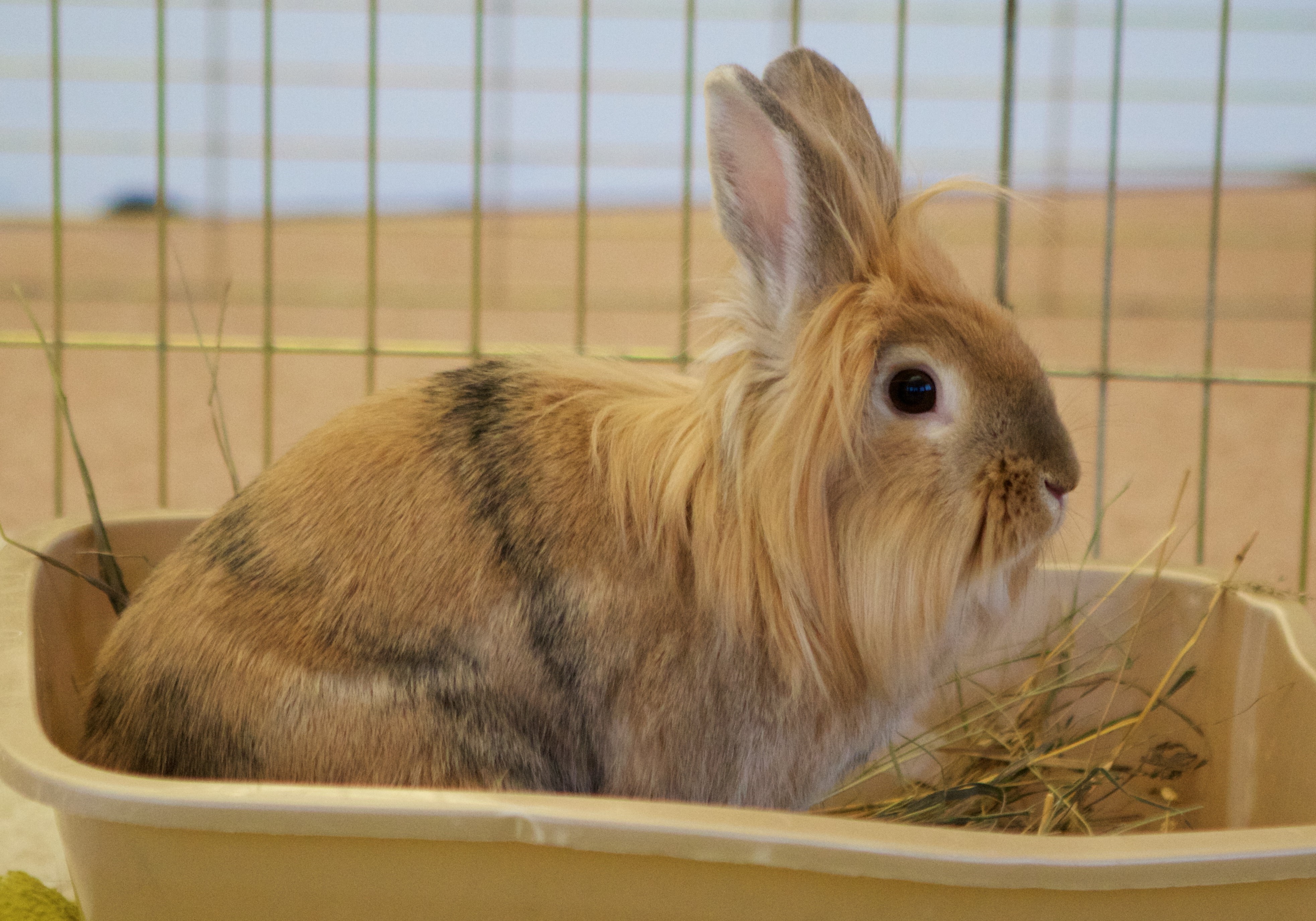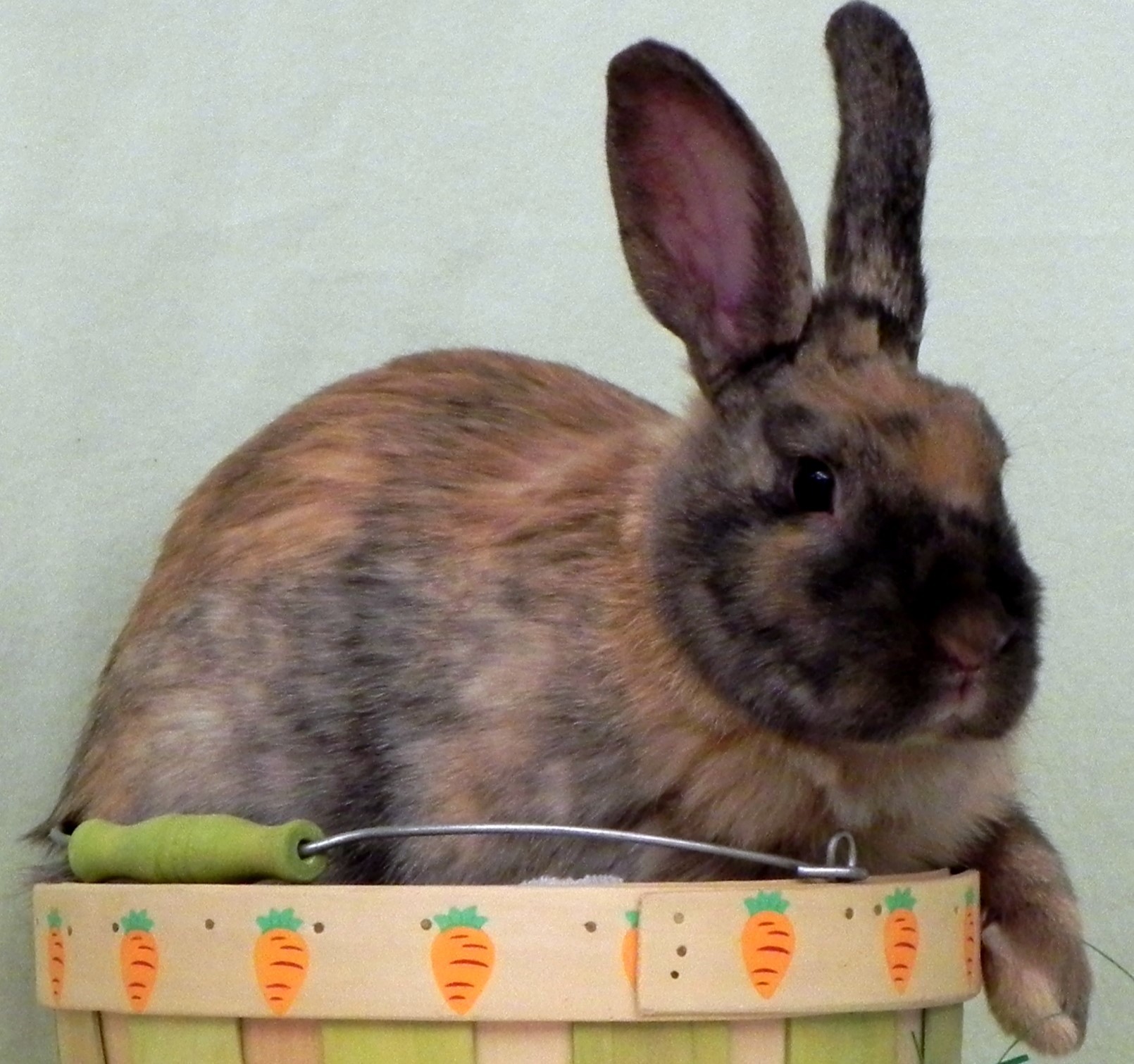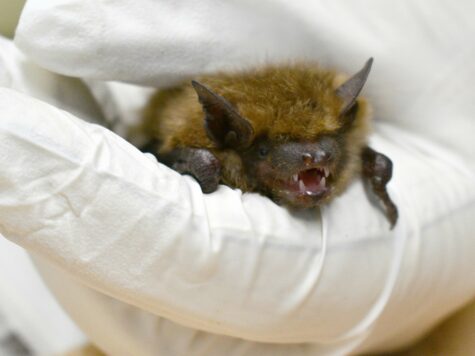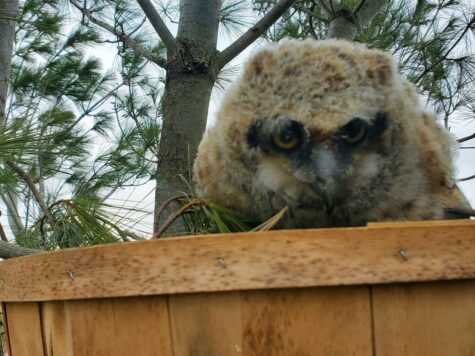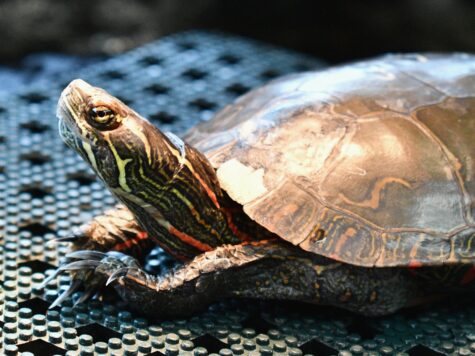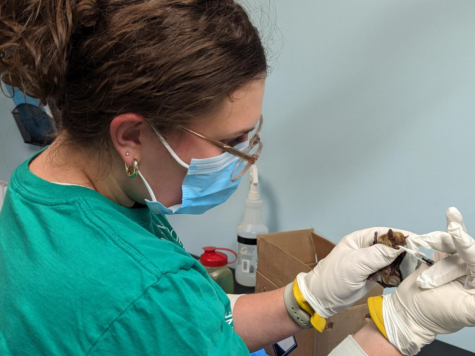Those long ears! That twitchy nose! That poufy cotton ball tail! Rabbits are very adorable, and it’s fun watching them hop about. But just like cats and dogs, rabbits also require a lot of work.
Even though rabbits are prey animals, they are social and respond to love and attention. They want to please and show off for their family, according to Joan Johnson, a senior animal caretaker at Dane County Humane Society. Rabbits also can live harmoniously with cats and dogs, as long as they’re not viewed as prey.
But before deciding if a rabbit is right for you and your family, there are a few things to consider beyond the cutesy side. The average lifespan for a rabbit is 8 to 12 years so adopting a bunny is a long-term commitment. Rabbits also like their routine, so expect to give them food and veggies about the same time each day. And if you take a trip, you need to find someone to care for your rabbit each day you are away following the routine you’ve established with your bun. Also, rabbits are very different from cats and dogs and need a veterinarian who knows how to care for them.
Joan, who has been a rabbit parent for many years and has fostered and cared for many rabbits throughout her career at DCHS, breaks down how to care for these adorable buns.
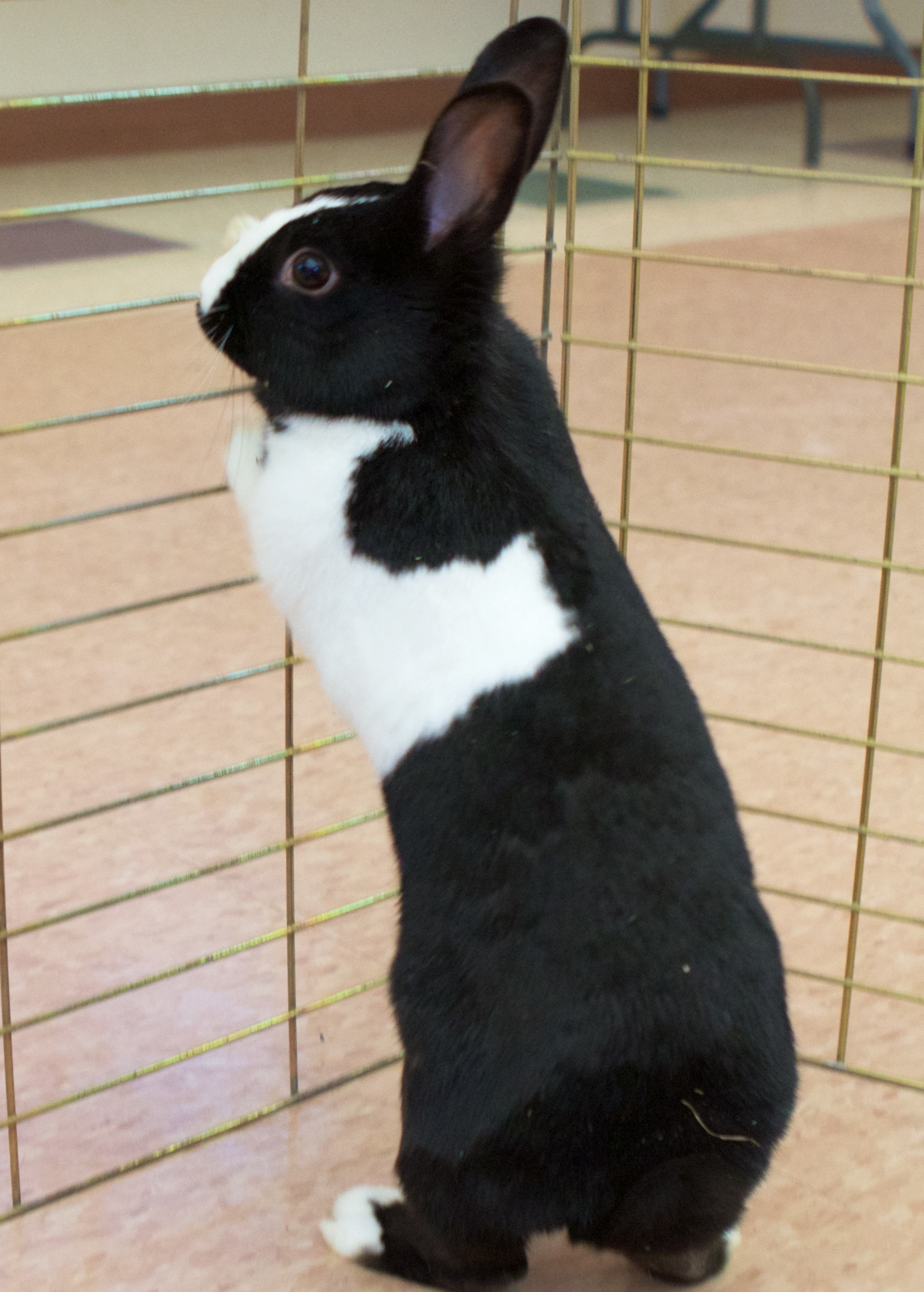
Cage vs. Free Roam
“I always recommend that every adopter has an appropriate rabbit cage to start out with,” says Joan. If families want to allow their rabbit to free roam 24/7, the cage door can be left open at all times.
Rabbits need a big cage with a solid floor, according to Joan. An extra-large, 4-foot long wire dog crate works too because it allows air to circulate, it has a solid floor, it is tall enough for the rabbit to stand on its back feet and not hit its head, and it has space for the bun to move around and stretch out. Covering the back third with a sheet provides some privacy, while thin fleece blankets on top of the bottom tray offer traction and help prevent the rabbit from sliding, according to Joan.
The cage should be kept indoors, preferably in a quiet area that is not drafty, musty, or in direct sunlight. “Rabbits don't do well in heat and can die very quickly from heat stroke,” Joan warns.
“A cage is an easy place to put their litter box, food, and water,” says Joan. When a rabbit jumps out of its litter box, hay and stool might fly out too. But having the litter box in a cage makes for easier cleanup of those messes, she explains.
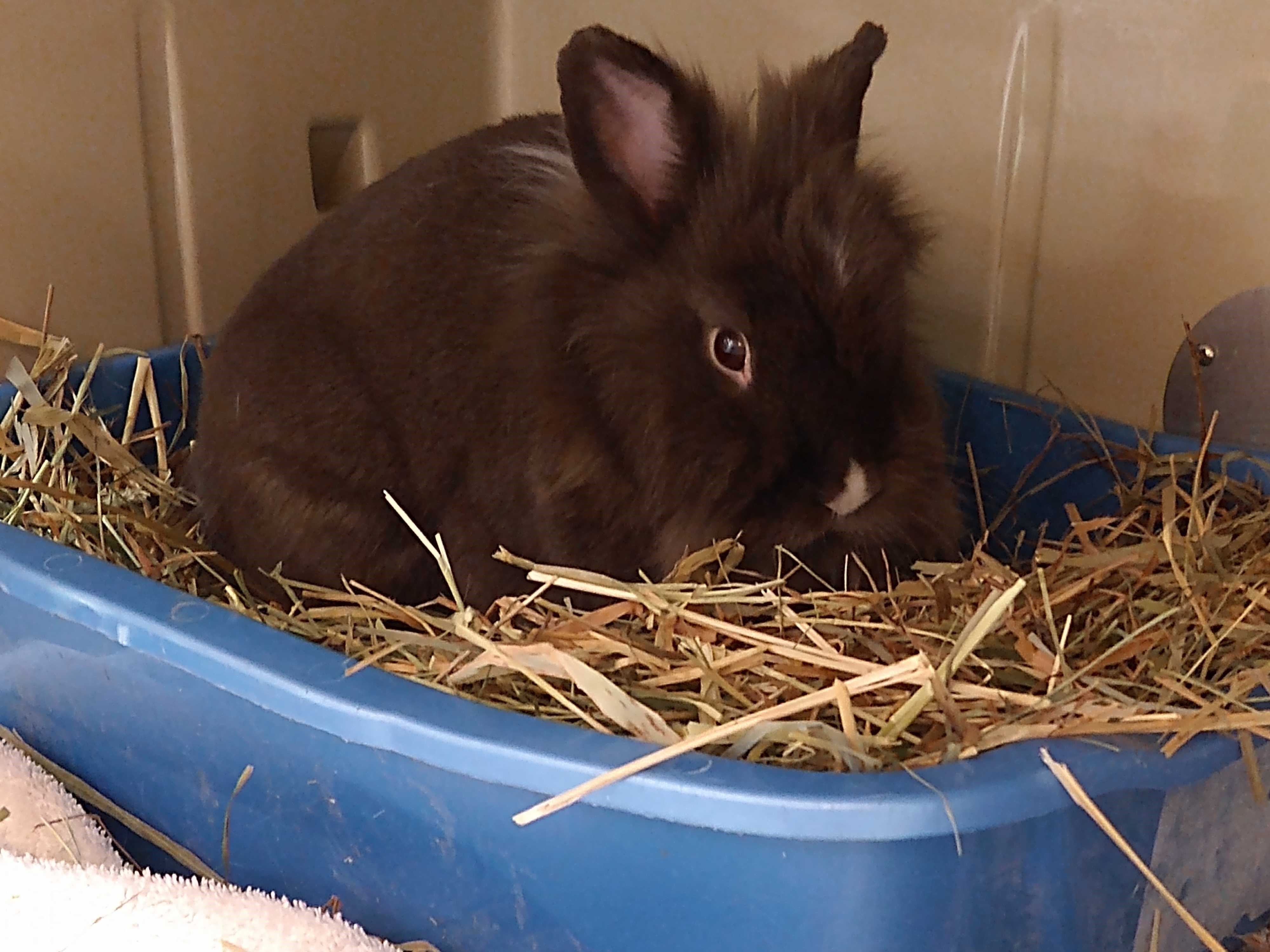
Some rabbits prefer a tall litter box while others are fine with a basic cat litter box that is about four inches tall. A plastic wash bin can also work well. The litter box should have a rabbit-approved litter, but don’t use clumpable litter, scented litter, cedar, or pine, according to Joan.
“It is not uncommon for even a rabbit with amazing litter box habits to want to make their new home smell like them,” Joan says, noting that the rabbit may run all around its new home marking everywhere. But, she adds, “This behavior is short-lived and usually stops within 12 to 24 hours.”
Another reason to have a cage is to help ensure your rabbit is eating and drinking well.
Even if you plan to house your bunny in a cage, they still need time out of the cage to run, play, and exercise, according to Joan, adding that rabbits need at least 3 hours a day of free-roam.
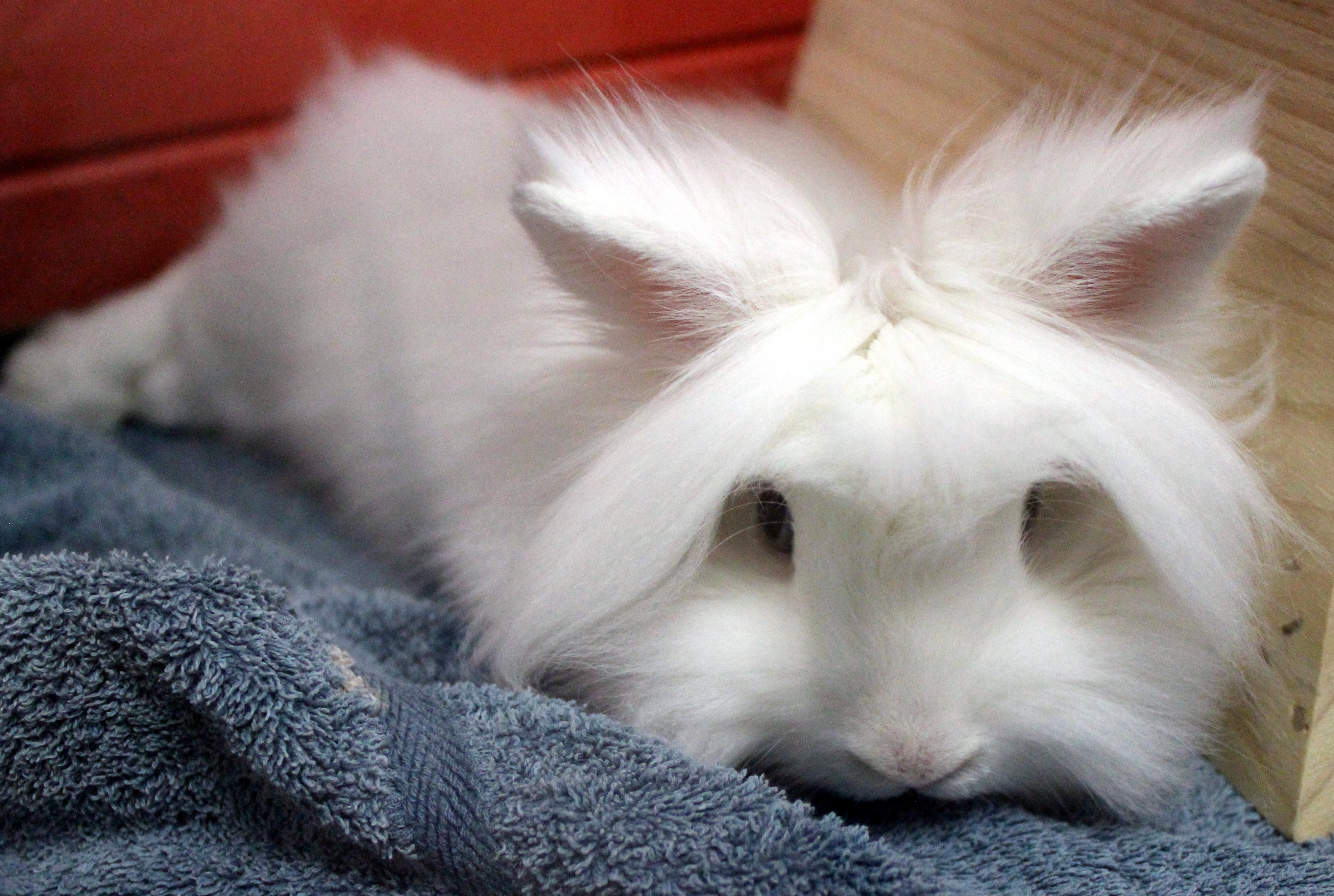
Bunny Proof Your Home
Before you let your rabbit free-roam, you need to make sure the area is safe by bunny proofing the space. Rabbits love to explore, so make sure medicines and cleaners are stored away in closed cabinets or closets, and plants are out of reach or in a room not accessible to the rabbit as many plants are toxic, according to Joan. Also, make sure all electrical cords are out or reach or wrapped with a spiral plastic tubing or pre-slit tubing. “This tubing needs to be very strong or the rabbit will still be able to chew through it,” Joan says.
If the designated room is not carpeted, add rugs or fleece blankets on the floor to give rabbits some traction as they are afraid of slippery surfaces, according to Joan.
“One way rabbits play is to run and jump and turn in midair. That is called a binky! They will need carpeted floor to be able to do this well,” Joan explains.
“Stay in the room to supervise your rabbit and keep an eye on what they are doing! Rabbits can jump from one piece of furniture to another, and before you know it they are on a shelf or table that you thought was a safe place to put items you wanted to keep away from the rabbit,” warns Joan.
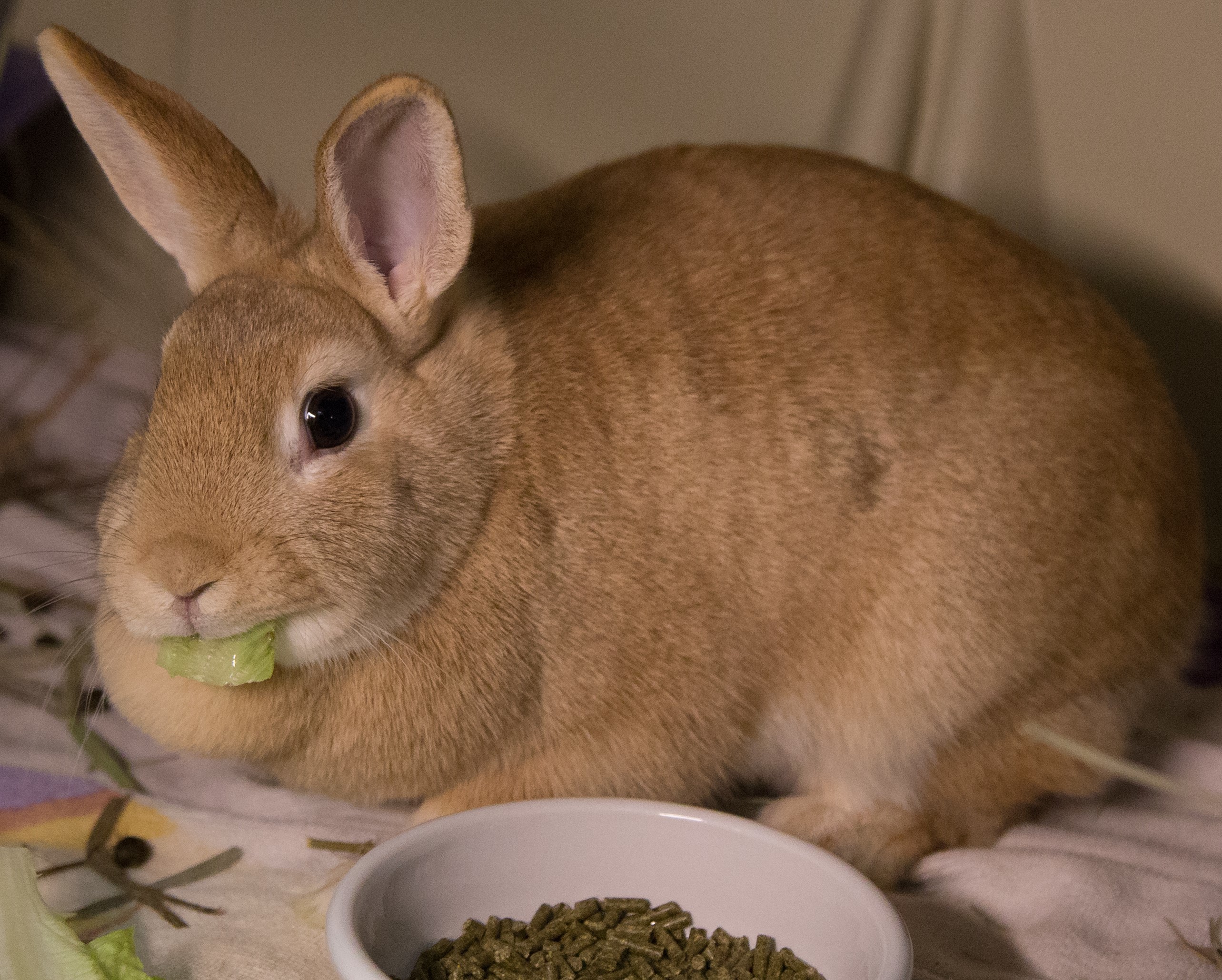
Feeding and Watering Your Bunny
All rabbits need grass hay -- not alfalfa -- at all times, according to Joan. “A favorite kind of hay for many rabbits is timothy hay. Non-alfalfa hay should be the main part of their diet,” says Joan. “They tend to like the green hay, but it should never be moldy or smell like dirt. It should smell pleasant.”
Rabbits also need pellet food. Placing pellets in a short ceramic bowl is easier for them to eat. Joan suggests starting rabbits on the pellet food they are currently eating before transitioning to the kind you plan on feeding them. “Don't buy rabbit food that has seeds, dried fruit or dried vegetables, colored kibble, or nuts in it,” Joan says. “It should be a high-quality pellet food with nothing but pellets.”
Rabbits under a year old should get the pellets made for young rabbits, while those over a year old should be fed adult pellets made with timothy hay.
Rabbits should get rabbit-approved greens daily unless they are babies. Bunnies under 3 months of age should not get greens, veggies or fruit. After reaching 3 months, rabbits should be introduced to these foods slowly and in small amounts, explains Joan.
Most rabbits also prefer to drink out of a bowl rather than use a water bottle. “It is not a bad idea to offer both, but you should always be sure to have a large ceramic bowl with fresh water in it to encourage drinking well,” Joan says. “Rabbits tend to drink a lot of water compared to other animals their size.”
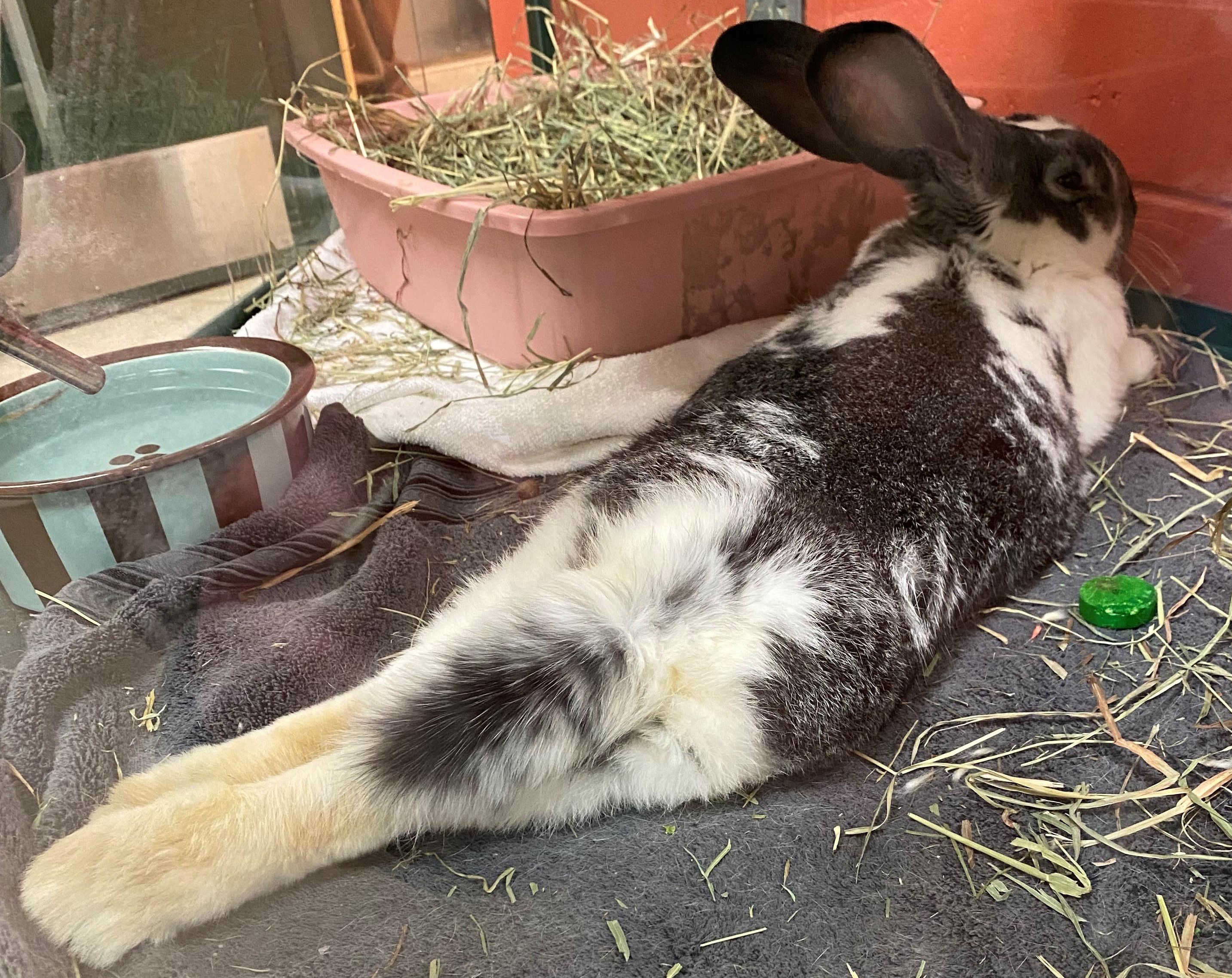
Bunny Behavior
Chewing and digging are two normal rabbit behaviors. “Rabbit teeth keep growing so they need a lot of rabbit-approved things to chew on,” says Joan.
Wooden chew toys can be purchased at pet stores, but rabbits can also be given cardboard toilet paper or paper towel tubes. Phones books and cardboard boxes, which can also give them a place to hide or sit atop, work well for rabbits that love to dig.
“Never give branches from outside unless you've dried them out and researched if they're okay for rabbits. If the sap is still wet, many branches are poisonous to rabbits,” Joan says.
If the rabbit chews something it shouldn’t, say no but immediately give it something it can chew, according to Joan. When the rabbit chews on its toys or uses the litter box well, encourage this behavior by telling it that it is a good rabbit.
“You should never scold or discipline them. If they are yelled at and frightened, they will likely hide and be afraid of you and their environment,” Joan explains. “If you discipline a rabbit that's not using his litter box by telling him no, and putting him into the litter box, it is likely he will be afraid of the litter box and never want to use it. This can make litter box training your rabbit almost impossible.”
Should your rabbit have an accident, Joan suggests cleaning the area with a solution of 50 percent vinegar and 50 percent water to neutralize the smell for both the rabbit and you. If the rabbit continues to have accidents in a certain location, Joan suggests adding a second litter box and putting it in that spot.
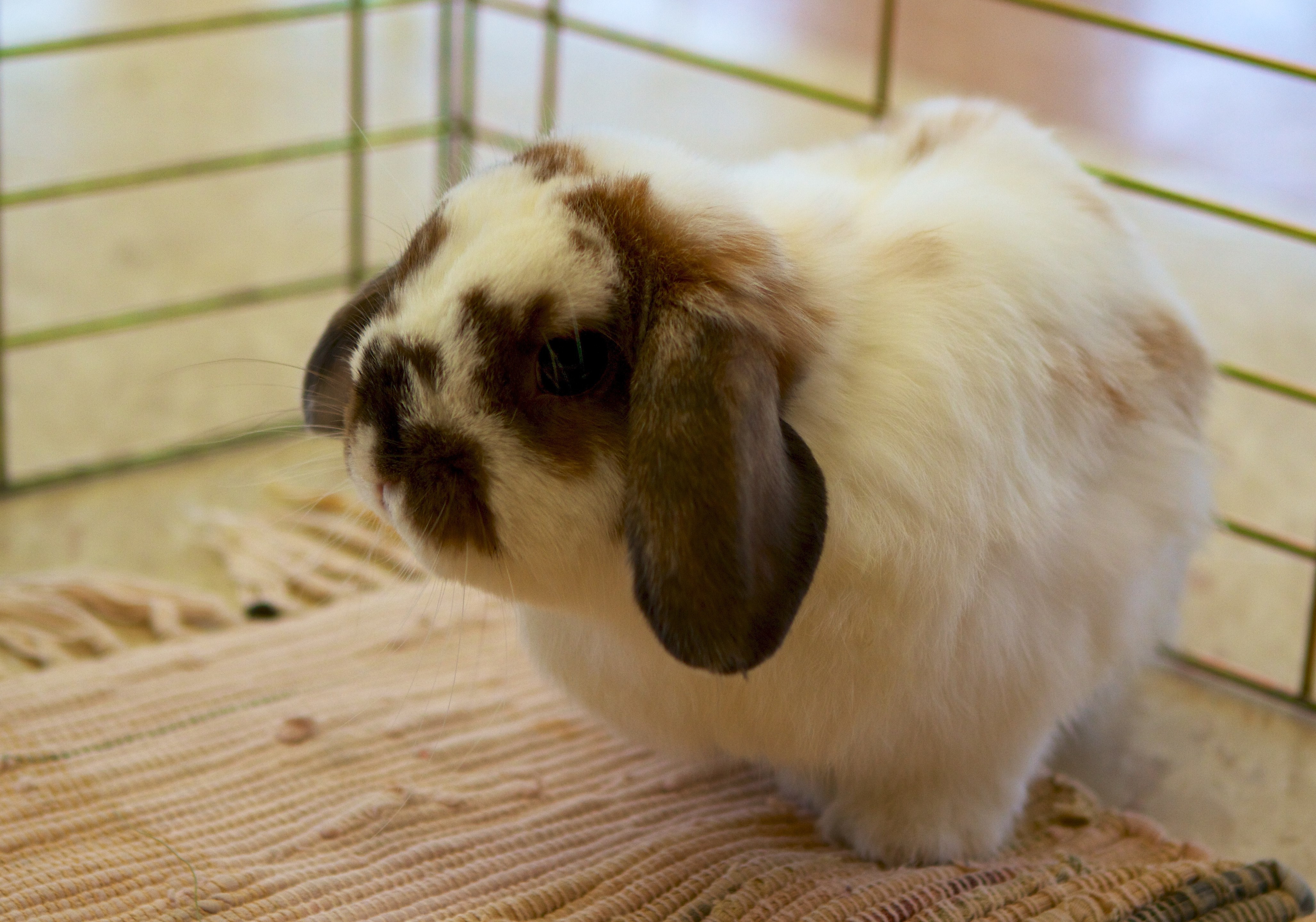
Keeping Your Bun Healthy
Rabbits need a specialty veterinarian that’s been trained in their care. “Rabbits are considered an exotic pet so their veterinarian care can be a little more expensive,” Joan says.
If your rabbit is not eating well, confine them to a small space so you can keep an eye on them, Joan explains. Also, give them extra veggies and sprinkle hay everywhere so they smell hay wherever they lay. “This encourages them to eat, and lets you see if they are actually eating or not,” Joan says. “Rabbits digest their food with bacteria so it is very important they continue to eat.”
If your rabbit normally is a fast eater but now they just nibble and go lay down, they are not feeling well, according to Joan. Other signs of illness can include lumps, hair loss, small feces, diarrhea, loud gas or gurgling in the gut, inability to defecate, hunched appearance, loud grinding teeth, or a change or loss of appetite.
“If you notice any of these symptoms you need to get your rabbit to the veterinarian immediately,” Joan says. They hide their illness, so you need to watch for the little signs. By the time they're acting sick, they are very sick and need to be seen by a veterinarian.”
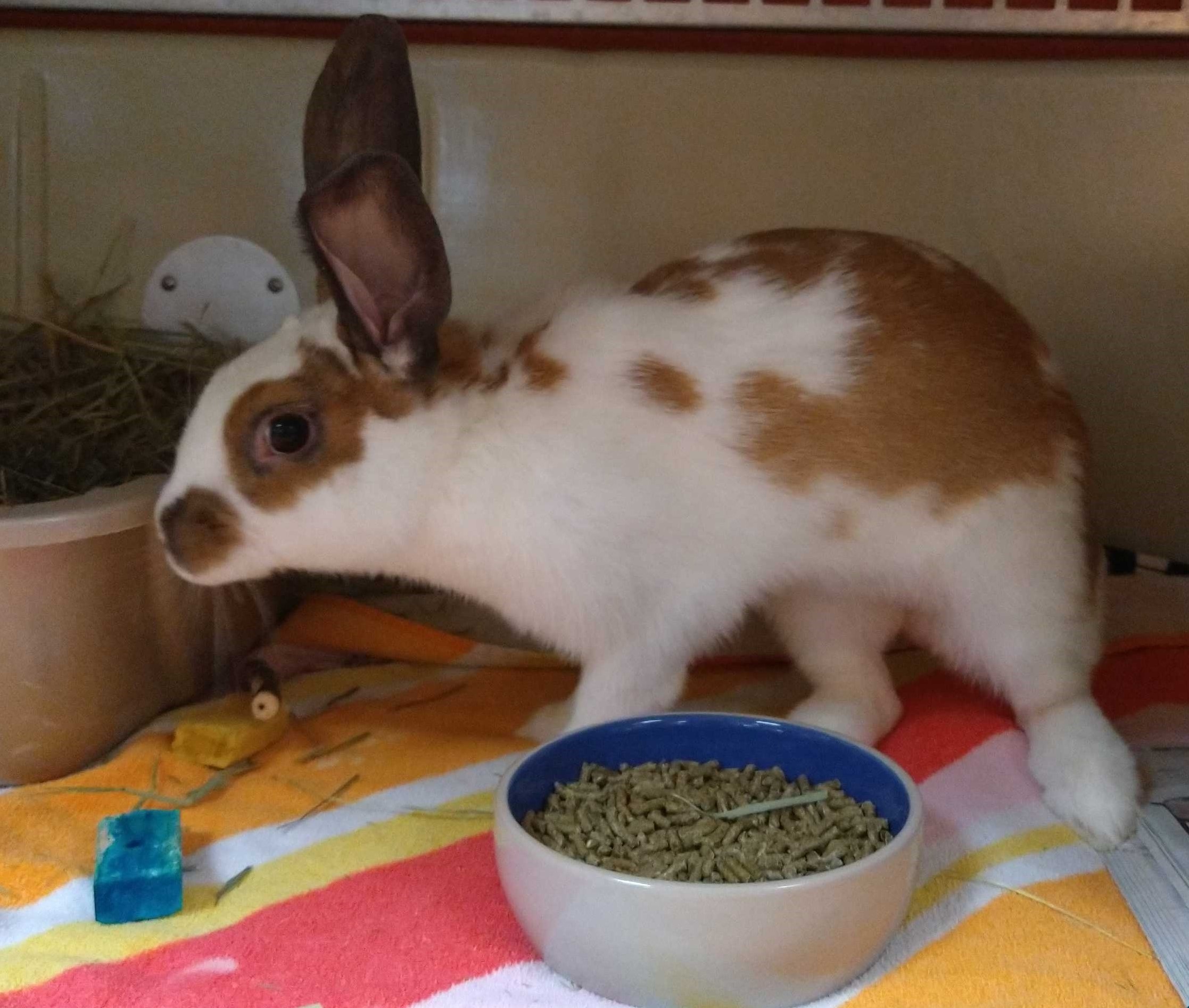
In addition, rabbits can actually be scared to death, according to Joan. Make sure introductions to your cat or dog are slow. In fact, wait until your rabbit has settled in and is comfortable in your home before trying to introduce them to their other furry family members.
Use a baby gate in a doorway for the first introduction and be sure your cat or dog can't jump over it, Joan explains. You may need to have your cat or dog on a leash during the introduction. Let your rabbit run the room and decide if they want to go up to the baby gate to see the other animal, Joan suggests.
“Even if the interaction goes well, be sure to watch the animals closely until you are absolutely positive the other animal will not harm your rabbit,” Joan says. “It's always better to be safe than sorry!”
Bringing your first pet rabbit home often means learning a lot about behavior, nutrition, and creating a safe environment for this unique species. Some extra preparations will help you create the perfect new home for your furry friend, so you can focus on other important things, like bunny snuggles!
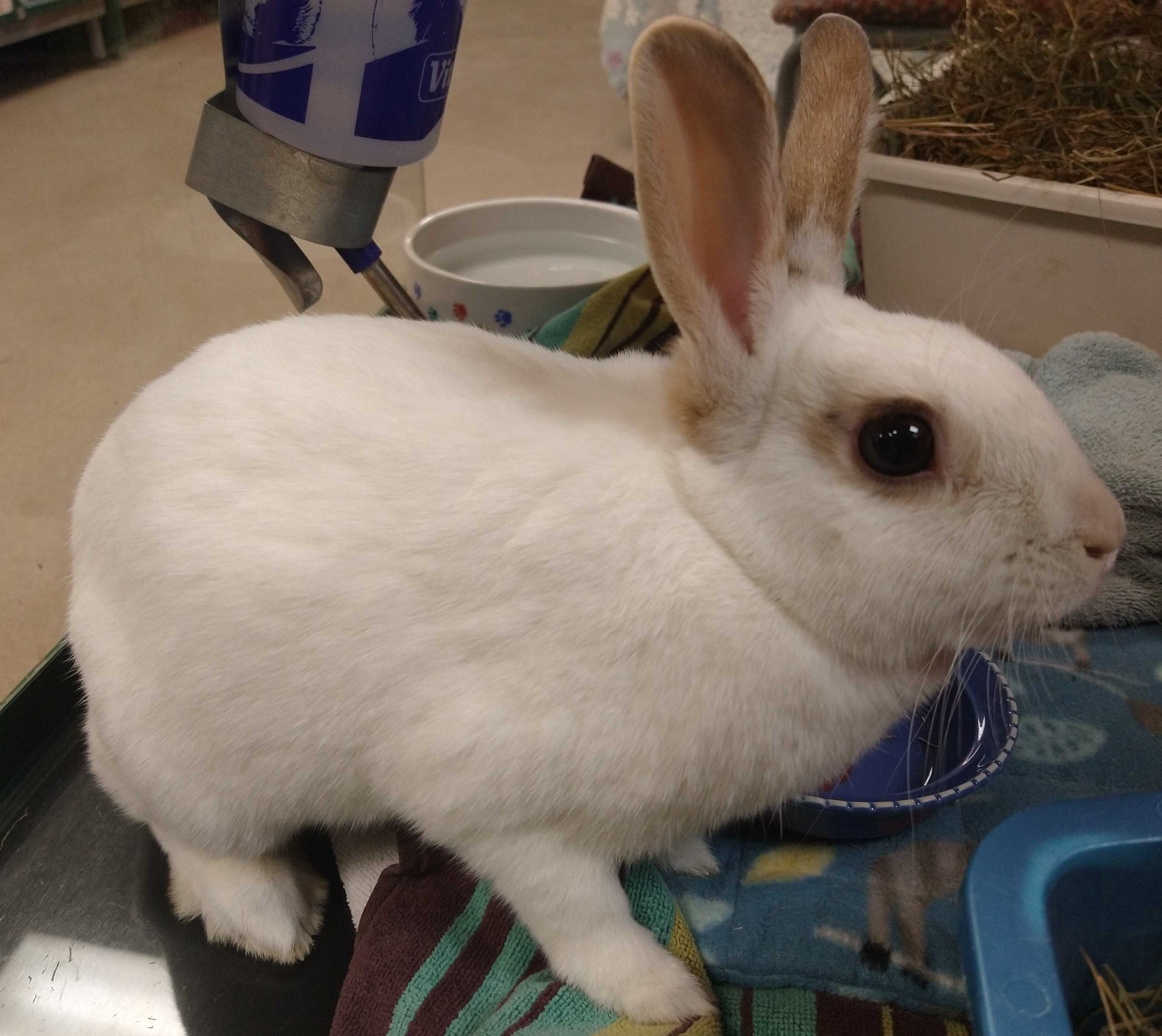
Bunny Communication 101
Rabbits communicate with many signs and actions. What is your bun is trying to tell you?
Chinning:
Rubbing their chin on things marks their territory with a scent they can smell, but humans cannot smell.
Thumping their back feet:
Warning of danger. Some rabbits do it to get your attention!
Love nip:
Licking you and then gently pinching you with their teeth.
Gently crunching their front teeth:
They are very content (like a cat purring). You will notice the rabbit is very relaxed and you will see his lips go up and down slightly, stop, and move up and down again.
Growl:
Warning I might bite so leave me alone.
Suddenly flopping on their back, feet up in the air:
Very content, life is great!
Grinding their back teeth loudly:
They are in extreme pain and need immediate veterinarian care. You will notice they are very tense and their eyes are often very wide.
